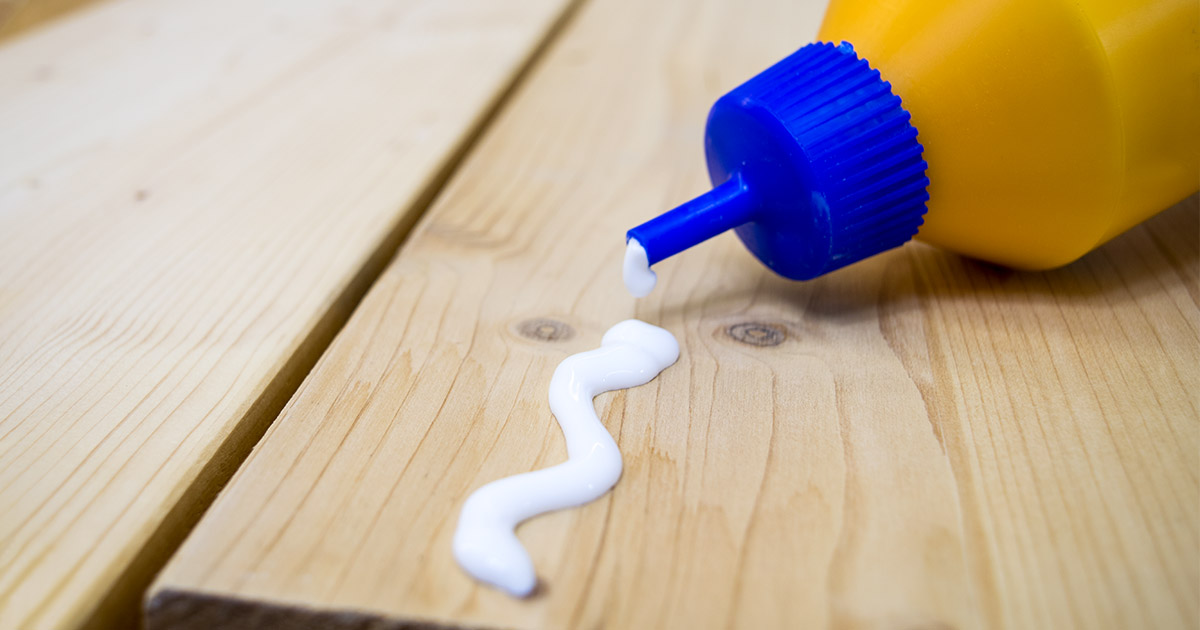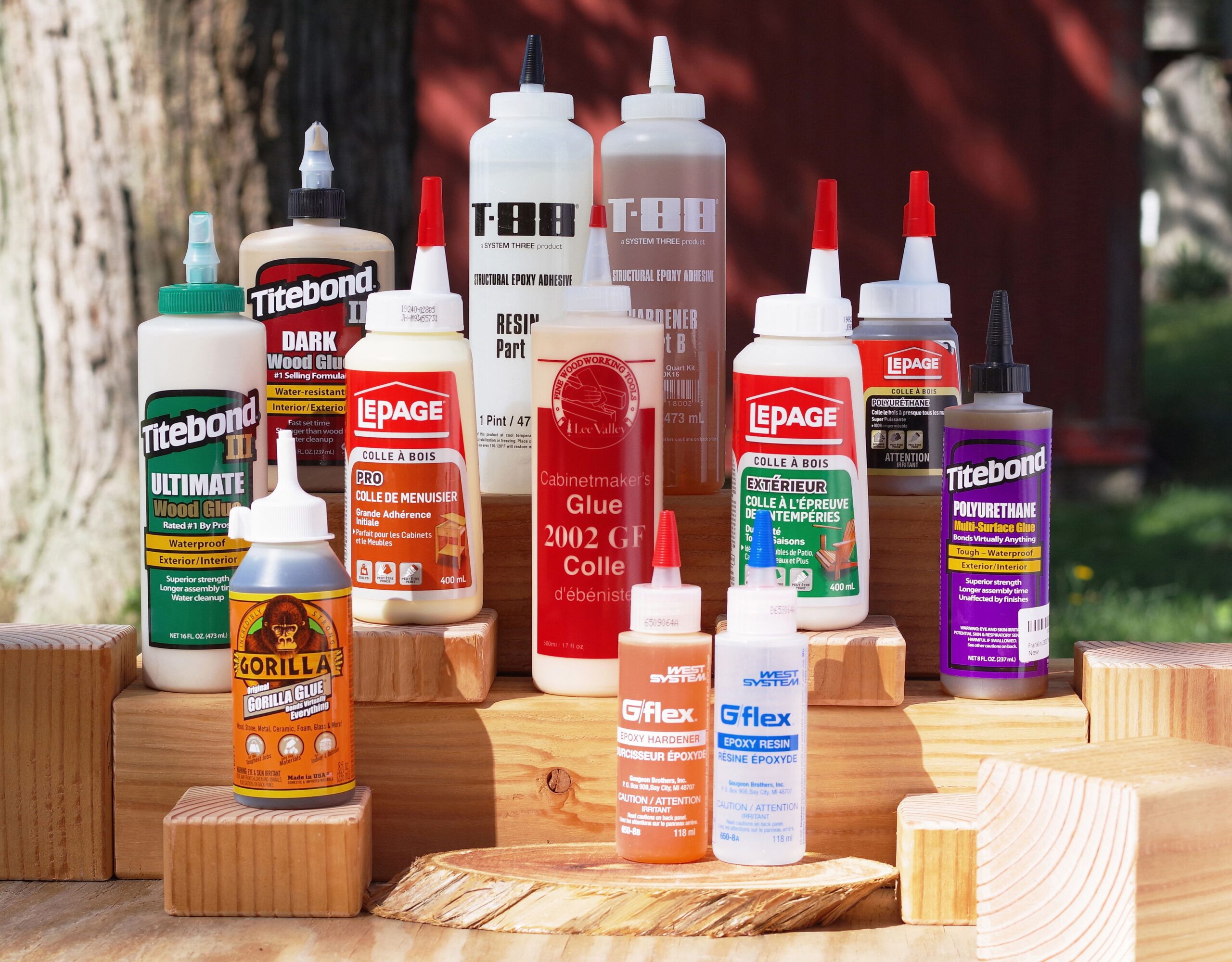When it comes to woodworking projects, one essential tool in your arsenal is wood glue. But have you ever wondered if wood glue is solely for wood? Well, stick around as we dive into this gluey topic!
So, here’s the burning question: Is wood glue only for wood? Spoiler alert, my friend: the answer might surprise you! While wood glue is predominantly used for bonding wood pieces together, its versatility extends beyond just wood.
You see, wood glue can also be used for various materials like paper, fabric, cardboard, and even some plastics. It’s like a super glue that bridges the gap between different crafts and fix-it projects. Let’s explore the magical world of wood glue and its many applications!

Is Wood Glue Only for Wood?
Welcome to our in-depth exploration of the question: is wood glue only for wood? In this article, we will delve into the various uses of wood glue, its compatibility with different materials, and the benefits and limitations it offers. While wood glue is primarily designed for use on wood, there are instances where it can be used effectively on other materials as well. So, let’s dive in and discover the versatility of wood glue!
The Versatility of Wood Glue
Wood glue, as the name suggests, is primarily designed for bonding pieces of wood together. However, the versatility of wood glue goes beyond its traditional application. When used correctly, wood glue can also create strong bonds on other porous materials such as cardboard, paper, and fabrics. The adhesive properties of wood glue make it a suitable option for various DIY projects and crafts, offering a reliable and long-lasting bond.
Uses on Non-Wood Materials
While wood glue may not be the ideal adhesive for non-porous materials like metal or plastic, it can still be utilized effectively on certain non-wood materials. For instance, when working with cardboard, wood glue can provide a secure bond that ensures the structural integrity of the project. Similarly, when attaching fabric to wood surfaces, wood glue can be a suitable alternative to fabric glue, offering a strong adhesion that withstands regular use and washing.
When using wood glue on non-wood materials, it is important to ensure that the surface is clean and free of any contaminants that might hinder the bond. Applying the glue evenly and using clamps or weights to hold the pieces in place while the glue dries will help ensure a reliable bond. It is also worth noting that the drying time of wood glue may vary depending on the material, so patience is key to achieving the best results.
Benefits of Wood Glue on Wood
While wood glue can be used on non-wood materials, its true efficacy shines when used on wood. Wood glue offers several benefits when it comes to bonding wood pieces together:
Strong and Durable Bonds
Wood glue creates a strong and durable bond between wood pieces, ensuring that joints and connections hold up over time. This is particularly important in woodworking projects that require stability and structural integrity.
Versatile and Flexible
Wood glue can accommodate various types of wood, making it suitable for a wide range of woodworking projects. It works well with different wood species, including hardwoods and softwoods, and can bond end grains, which are typically challenging to join with other adhesives.
Easy to Use and Clean Up
Wood glue is user-friendly, allowing for easy application and clean up. It typically comes in a liquid form that can be applied directly from the bottle using a brush or a glue spreader. Any excess glue that squeezes out during clamping can easily be wiped away before it dries.
Using Wood Glue Safely and Effectively
To ensure the best results when using wood glue, there are a few tips and tricks to keep in mind:
Preparation is Key
Before applying wood glue, it is crucial to prepare the surfaces that will be bonded. This includes ensuring that the wood is clean, dry, and free of any paint, varnish, or oils that might hinder the adhesive’s effectiveness.
Apply Adequate Pressure
When joining wood pieces together, sufficient pressure should be applied to ensure a strong bond. The use of clamps or weights during the drying process helps ensure even distribution of pressure and prevents any gaps or weak spots in the bond.
Allow Sufficient Drying Time
Wood glue requires time to fully dry and cure. Rushing the drying process can compromise the strength of the bond. Be patient and allow the recommended drying time specified by the manufacturer.
Conclusion
Wood glue, although primarily designed for wood, can be a versatile adhesive that finds its applications beyond the world of woodworking. While it may not be suitable for all materials, it can still provide reliable and strong bonds on certain non-wood materials such as cardboard and fabric. When used correctly, wood glue offers the benefits of strong and durable bonds on wood, versatility, and easy application and cleanup. Remember to follow the recommended preparation, application, and drying guidelines to ensure the best results. So, the next time you’re working on a project, consider the versatility of wood glue and explore its potential beyond wood!
Key Takeaways: Is Wood Glue Only for Wood?
1. Wood glue is primarily used for bonding wood surfaces together.
2. It can also be used on other porous materials like particleboard or laminate.
3. Wood glue may not work as effectively on non-porous materials like metal or glass.
4. Different types of wood glue are available for specific applications, such as exterior use or high-stress joints.
5. Always follow the manufacturer’s instructions when working with wood glue.
Frequently Asked Questions
When it comes to wood glue, there are often some misconceptions about its uses. Let’s explore some common questions to understand if wood glue is only for wood.
1. Can wood glue be used on materials other than wood?
Yes, wood glue is primarily designed for bonding wood, but it can also be used on other porous materials, such as cardboard, paper, or fabric. The key is to ensure that the surface is absorbent enough to allow the glue to penetrate and form a strong bond. It’s always a good practice to test the glue on a small, inconspicuous area before applying it to the entire surface.
However, for non-porous materials like metal, plastic, or glass, traditional wood glue may not be the best choice. In those cases, it’s recommended to use specialized adhesives specifically formulated for those materials.
2. Is wood glue waterproof?
Not all wood glues are waterproof. Some wood glues are water-resistant, which means they can withstand occasional exposure to water without compromising their bond. However, for applications where the glued joint will be submerged or exposed to constant moisture, it’s important to use a waterproof wood glue or a marine-grade adhesive. These specialized glues have added chemicals that make them more resistant to water damage.
Always check the label or product description to ensure you are using the appropriate type of wood glue for your specific application.
3. How long does wood glue take to dry?
The drying time of wood glue can vary depending on several factors. In general, wood glue requires clamping for about 30 minutes to an hour to achieve an initial bond. However, it’s important to note that the bond strength continues to develop over a longer period of time, typically reaching its maximum strength in 24 hours.
Keep in mind that environmental conditions, such as temperature and humidity, can also affect the drying time. Cooler temperatures and high humidity can extend the drying time, while warmer temperatures and low humidity may speed up the process. It’s important to follow the manufacturer’s instructions for the specific wood glue you are using.
4. Can wood glue be sanded or painted?
Yes, once wood glue has fully dried and cured, it can be sanded and painted just like wood. However, it’s important to ensure that the glue is completely dry before performing any sanding or painting. Sanding before the glue has fully cured can result in a weakened bond.
When painting over wood glue, it’s recommended to use a primer to ensure proper adhesion. This will help the paint adhere smoothly and evenly to the glued surface. Always follow the paint manufacturer’s instructions for the best results.
5. How to remove excess wood glue?
If you’ve accidentally applied too much wood glue or need to remove excess glue, it’s best to do so while the glue is still wet. Using a damp cloth or sponge, carefully wipe away the excess glue before it dries. Be cautious not to spread the glue further or push it deeper into the wood grain.
If the glue has already dried, it can be more challenging to remove. You can try carefully scraping off the excess glue with a sharp blade or chisel, taking care not to damage the wood. Another option is to use a sandpaper or a sanding block to gently sand away the dried glue. However, be cautious to avoid over-sanding the surrounding wood.

The Surprising TRUTH about Wood Glue
Summary
Wood glue is not only for wood. It can also be used on other materials like plastic, ceramics, and fabric. When using wood glue on non-wood surfaces, it’s important to ensure a strong bond by following the instructions and allowing enough drying time. Additionally, there are specific types of glue designed for different materials, so it’s essential to choose the right glue for the job.
In conclusion, wood glue is a versatile adhesive that can be used on various surfaces besides wood. With proper application and selection of the right glue, it can create a strong bond on materials like plastic, ceramics, and fabric. So next time you have a DIY project, don’t hesitate to try using wood glue on different materials!
